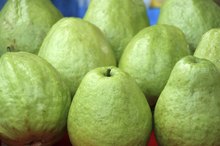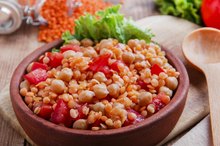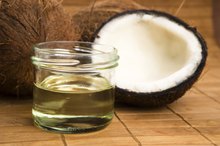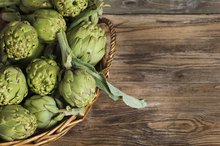How to Reduce a Fatty Liver
Fatty liver is characterized by the buildup of fat cells in the liver, according to the University of Maryland Medical Center. This condition may be caused by excessive use of alcohol, prescription drugs or accumulation of environmental toxins. Fatty liver may cause enlargement of the liver and may result in abdominal pain, particularly on the right side of the abdomen. This condition may also result in symptoms such as fever, confusion and jaundice, or yellowing of the skin.
If you are experiencing serious medical symptoms, seek emergency treatment immediately.
Adopt a diet consisting of about 75 percent organic raw fruits, vegetables, seeds and nuts. According to Dr. James Balch and Phyllis Balch, authors of "Prescription for Nutritional Healing, raw, organic plant foods introduce fewer toxins into the body than cooked foods 1. This may reduce the workload on the liver, allowing it to clear out fatty deposits and regenerate healthy cells.
Foods Known to Damage the Liver
Learn More
Add beans and legumes, such as chickpeas, kidney beans, soybeans and peas, to your diet. According to the Balches, these foods contain arginine, an amino acid that helps neutralize ammonia, which is a toxic byproduct created by the body during the digestion process. Detoxification of ammonia may reduce stress on the liver.
Flavor gyros, falafel and other Greek dishes with anise seeds, which complement Mediterranean cuisine. According to Michael Castleman, author of "The Healing Herbs, anise seeds may stimulate the regeneration of healthy liver cells, allowing the liver to flush out excess fats 2.
Foods That Are Good for a Liver Cleanse
Learn More
Eat lean proteins, such as tofu and lean poultry, instead of pork and beef products. Red meats are high in saturated fats. According to the Balches, these fats may strain the liver and promote the accumulation of liver fats.
Add turmeric to soups, curries and casseroles. Turmeric is a spice commonly used in Indian cuisine. According to Castleman, this spice contains a chemical, called curcumin, that may help protect the liver against damage caused by accumulated fats. It may also aid in the regeneration of liver cells and the removal of fats.
Tips
Drink at least 64 oz. of filtered water per day. Proper hydration may help cleanse the liver of fats and toxins.
Warnings
Check with your doctor before using anise seeds. Although side effects are rare, these seeds may cause nausea and vomiting.
Related Articles
References
- "Prescription for Nutritional Healing"; Dr. James F. Balch, M.D. and Phyllis A. Balch, C.N.C.; 1997
- "The Healing Herbs"; Michael Castleman; 1991
- Ersöz G, Günşar F, Karasu Z, Akay S, Batur Y, Akarca US. Management of fatty liver disease with vitamin E and C compared to ursodeoxycholic acid treatment. Turk J Gastroenterol. 2005;16(3):124-8.
- Cusi K. Nonalcoholic fatty liver disease in type 2 diabetes mellitus. Curr Opin Endocrinol Diabetes Obes. 2009;16(2):141-9. doi:10.1097/MED.0b013e3283293015
- Deivanayagam S, Mohammed BS, Vitola BE, et al. Nonalcoholic fatty liver disease is associated with hepatic and skeletal muscle insulin resistance in overweight adolescents. Am J Clin Nutr. 2008;88(2):257-62. doi:10.1093/ajcn/88.2.257
Writer Bio
Owen Pearson is a freelance writer who began writing professionally in 2001, focusing on nutritional and health topics. After selling abstract art online for five years, Pearson published a nonfiction book detailing the process of building a successful online art business. Pearson obtained a bachelor's degree in art from the University of Rio Grande in 1997.









